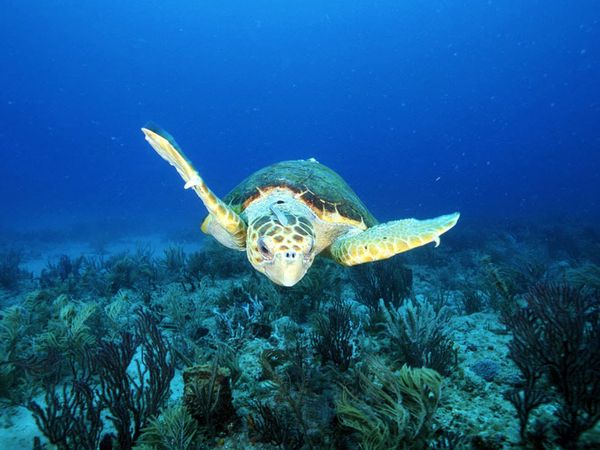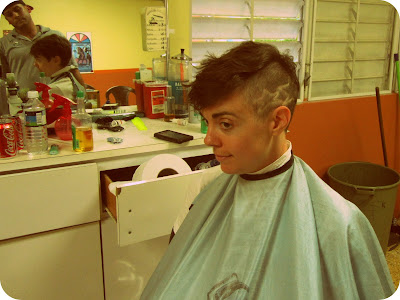HITCHHIKING IN HURRICANE SEASON - Lightning
The sky breaks open with a terrible ripping sound and slams back together again as the bolt’s bright flash momentarily floods my cabin. In the darkness that follows, I hug my knees to my chest; trying to shut out the storm, I squeeze my eyes tight and plug my fingers in my ears, but the lightning looks like the light of day through my eyelids and the thunder rumbles through my body in a terrifying tremor. Rain pounds the deck like the footfalls of a thousand soldiers as gusts strong-arm the boat over on her side.
Please don’t let lightning strike our mast, I plead silently, hoping the next bolt won’t choose our sixty foot aluminum lightning rod as the perfect pathway to ground and blast out our communication and navigation equipment or blow a hole through the hull.
I huddle inside myself as another river of white hot electricity tears a hole in the sky. Clouds collapse back into the open space in an avalanche of air, whose shockwave shudders through me. I curse my decision to hitchhike on a sailboat in the Caribbean during the start of the hurricane season. I don’t have to be here and this is hardly my idea of fun.
Initially, I’d been skeptical, worried we’d be caught in a storm as it was forming, but so far, we’ve been lucky. For the past few days, we’ve been watching a tropical wave grow into a tropical low off the coast of Panama, nearly a thousand miles southwest of us. The tropical low, not quite a hurricane yet, is still a force to be reckoned with, but I hadn’t been prepared for anything like this here.
In a momentary lull of wind and rain, I can hear small, short waves knock against the hull in a too fast rhythm, jerking the boat from side to side. Thankfully, we are anchored off Georgetown in Kidd Cove, one of the Bahama’s more protected harbors. So protected by reefs and barrier islands, we needed five waypoints to safely navigate the entrance. In Kidd Cove we are sheltered from the waves on all sides, but not from above.
Another crack of lightning unleashes a sonic boom so powerful it feels like it could bruise a person’s insides. I try to tell myself there’s nothing I can do, to go sleep, but alone in my bunk I’m assaulted from outside as well as within as terror tries to beat its way out of my body. I hug my knees tighter, searching for a comfort I cannot find. I have the urge to crawl into the captain’s bunk to quiet my terror by sharing it, but worry he’ll misinterpret a strange woman getting into bed with him in the middle of the night and decide against it.
Unable to stand lying in my bunk any longer, I throw off my sheet and head toward the main hatch. I want to look this storm in the face.
Driving rain batters my cheeks, forcing me to squint to protect my eyes. All around us a wall of rain obscures Kidd Cove in frenzied darkness that explodes in my chest in electric whiteness, then falls to black. The sweet char of burning ozone hangs heavy in the air.
I slam the hatch shut with a force I hadn’t intended. I’d wanted to go on deck, but my own irrational fear that my exposed body would draw the lightning to us, keeps me below. Instead I stand on my tip-toes and peer out a portlight in the main salon.
“Oh... you closed the hatches.” Lingering sleep slightly slurs George’s words.
I draw in a sharp breath, startled by the captain’s apparition, barely visible in the dark. “Yeah. The storm woke me an hour ago.”
After a while George’s disembodied voice says, “pretty scary.” His fear is comforting; at least I’m not alone.
I want to keep vigil together over a pot of tea, but before I can say so, George says, “Well, good night,” and heads back to bed.
I envy his ability to sleep. The odds of me getting struck by lightning are better than my being able to sleep through this storm. But more than envy, I feel the lack of him leaving.
Somehow more alone than before, I drop down on the settee berth behind me. Unwilling to torture myself in my bunk, I sit, straight up, hands on knees, and give over to being awake. While the great collision of clouds continues overhead, my biology stands at the ready, keeping every muscle tensed, sending chemical attention charging through my veins. In the dark punctuated by bombastic flashes of white, I sit alone with only my fear for company. I know I should be able to comfort myself, but I can’t.
We’re moored a few hundred feet from shore in a protected anchorage; even if the boat were to sink, I know I can swim to shore and save my life. My fear isn’t about death, but my total vulnerability to the overwhelming force of this storm. Each burst of lightning bombards my belief that I am safe on this boat and yet I have to trust this thin fiberglass hull to carry me thousands of miles across an indifferent and hostile ocean or I have to give up this journey.
After a while, the lightning and the thunder begin to part. A crack of light turns night to day followed by the steady drum of rain and then a low rumble I can hear, but cannot feel. As the storm recedes mile by mile and the distance between light and sound increases, my animal nature lets go and lies down.
Please don’t let lightning strike our mast, I plead silently, hoping the next bolt won’t choose our sixty foot aluminum lightning rod as the perfect pathway to ground and blast out our communication and navigation equipment or blow a hole through the hull.
I huddle inside myself as another river of white hot electricity tears a hole in the sky. Clouds collapse back into the open space in an avalanche of air, whose shockwave shudders through me. I curse my decision to hitchhike on a sailboat in the Caribbean during the start of the hurricane season. I don’t have to be here and this is hardly my idea of fun.
Initially, I’d been skeptical, worried we’d be caught in a storm as it was forming, but so far, we’ve been lucky. For the past few days, we’ve been watching a tropical wave grow into a tropical low off the coast of Panama, nearly a thousand miles southwest of us. The tropical low, not quite a hurricane yet, is still a force to be reckoned with, but I hadn’t been prepared for anything like this here.
In a momentary lull of wind and rain, I can hear small, short waves knock against the hull in a too fast rhythm, jerking the boat from side to side. Thankfully, we are anchored off Georgetown in Kidd Cove, one of the Bahama’s more protected harbors. So protected by reefs and barrier islands, we needed five waypoints to safely navigate the entrance. In Kidd Cove we are sheltered from the waves on all sides, but not from above.
Another crack of lightning unleashes a sonic boom so powerful it feels like it could bruise a person’s insides. I try to tell myself there’s nothing I can do, to go sleep, but alone in my bunk I’m assaulted from outside as well as within as terror tries to beat its way out of my body. I hug my knees tighter, searching for a comfort I cannot find. I have the urge to crawl into the captain’s bunk to quiet my terror by sharing it, but worry he’ll misinterpret a strange woman getting into bed with him in the middle of the night and decide against it.
Unable to stand lying in my bunk any longer, I throw off my sheet and head toward the main hatch. I want to look this storm in the face.
Driving rain batters my cheeks, forcing me to squint to protect my eyes. All around us a wall of rain obscures Kidd Cove in frenzied darkness that explodes in my chest in electric whiteness, then falls to black. The sweet char of burning ozone hangs heavy in the air.
I slam the hatch shut with a force I hadn’t intended. I’d wanted to go on deck, but my own irrational fear that my exposed body would draw the lightning to us, keeps me below. Instead I stand on my tip-toes and peer out a portlight in the main salon.
“Oh... you closed the hatches.” Lingering sleep slightly slurs George’s words.
I draw in a sharp breath, startled by the captain’s apparition, barely visible in the dark. “Yeah. The storm woke me an hour ago.”
After a while George’s disembodied voice says, “pretty scary.” His fear is comforting; at least I’m not alone.
I want to keep vigil together over a pot of tea, but before I can say so, George says, “Well, good night,” and heads back to bed.
I envy his ability to sleep. The odds of me getting struck by lightning are better than my being able to sleep through this storm. But more than envy, I feel the lack of him leaving.
Somehow more alone than before, I drop down on the settee berth behind me. Unwilling to torture myself in my bunk, I sit, straight up, hands on knees, and give over to being awake. While the great collision of clouds continues overhead, my biology stands at the ready, keeping every muscle tensed, sending chemical attention charging through my veins. In the dark punctuated by bombastic flashes of white, I sit alone with only my fear for company. I know I should be able to comfort myself, but I can’t.
We’re moored a few hundred feet from shore in a protected anchorage; even if the boat were to sink, I know I can swim to shore and save my life. My fear isn’t about death, but my total vulnerability to the overwhelming force of this storm. Each burst of lightning bombards my belief that I am safe on this boat and yet I have to trust this thin fiberglass hull to carry me thousands of miles across an indifferent and hostile ocean or I have to give up this journey.
After a while, the lightning and the thunder begin to part. A crack of light turns night to day followed by the steady drum of rain and then a low rumble I can hear, but cannot feel. As the storm recedes mile by mile and the distance between light and sound increases, my animal nature lets go and lies down.
I've slumped back onto the settee berth’s firm cushions without realizing I had. The familiar phrase, “We’ve survived the storm,” runs through my head as sleep weighs down my eyes. I now know intimately the unsettled weather so common in the tropics in hurricane season. I think I’m supposed to feel stronger having come through the other side, but I don’t feel powerful; I feel lucky. More aware of our vulnerabilities, I collapse onto my bunk with the knowledge that I’m still here.





























